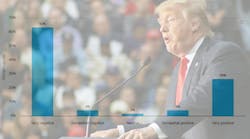Water Supply Cost Savings Act Introduced in Congress
On Sept. 18, 2014, U.S. Rep. Marlin Stutzman (R-IN) introduced the ''Water Supply Cost Savings Act,'' or ''Savings Act,'' legislation to provide small communities across the nation with critical information on the use of water wells and water well systems to deliver high quality, affordable drinking water.
The Savings Act (HR 5659) was greeted with enthusiastic support from the water supply industry, including the Water Systems Council, the Water Quality Assn. and the National Groundwater Assn.
The Savings Act is aimed at reducing the costs to federal, state and local governments in providing quality drinking water to millions of Americans living in rural and isolated communities by promoting cost-effective community well water systems.
To assist small communities with their consideration of drinking water technology needs, the Savings Act establishes a Drinking Water Technology Clearinghouse where the Administrator of the U.S. Environmental Protection Agency (EPA) and the Secretary of Agriculture will disseminate information on cost-effective, innovative and alternative drinking water delivery systems, including systems that are supported by wells.
There are 52,000 community water systems in the U.S., of which 41,801 are small community water systems (3,300 or fewer people). EPA's most recent Drinking Water Needs Survey placed the shortfall in drinking water infrastructure funding for small communities at $64.5 billion. The Savings Act will encourage these small communities to consider less expensive drinking water systems supplied by wells that could save taxpayers billions of dollars in infrastructure costs.
Source: Water Systems Council


